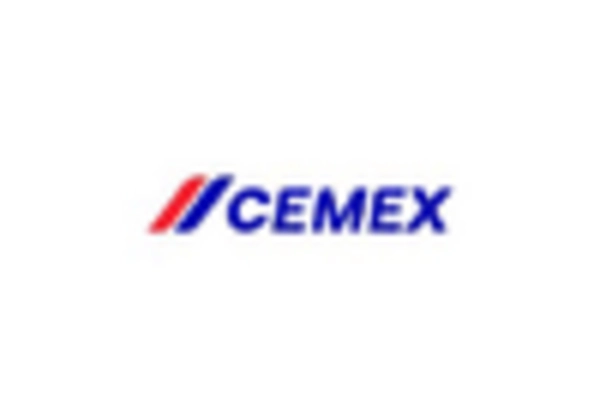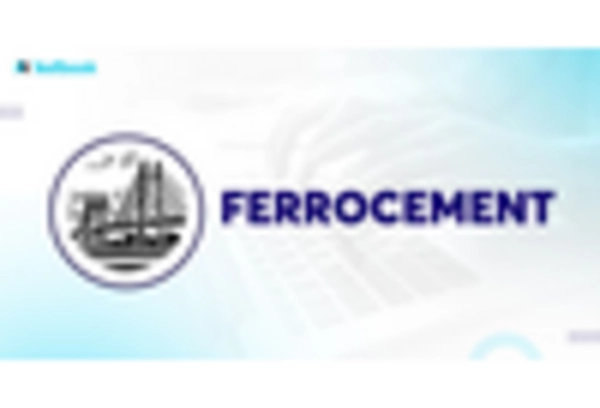Urbanization Trends
Rapid urbanization is driving demand for innovative construction materials, including smart concrete, within the Smart Concrete Market. As urban populations swell, the need for resilient infrastructure becomes increasingly critical. Smart concrete offers solutions that address the challenges posed by urban environments, such as traffic congestion and environmental degradation. The market data suggests that urban areas are expected to grow significantly, necessitating the development of smart buildings and infrastructure. Consequently, the Smart Concrete Market is poised to expand as cities seek to implement advanced materials that enhance urban living conditions.
Sustainability Initiatives
The increasing emphasis on sustainability within the construction sector appears to be a pivotal driver for the Smart Concrete Market. As environmental concerns escalate, stakeholders are seeking materials that minimize ecological footprints. Smart concrete, with its potential for self-healing and energy efficiency, aligns well with these sustainability initiatives. Reports indicate that the construction industry is responsible for a substantial percentage of global carbon emissions, prompting a shift towards greener alternatives. The Smart Concrete Market is likely to benefit from regulations and incentives aimed at promoting sustainable building practices, thereby enhancing its adoption across various projects.
Technological Advancements
Technological advancements in material science and engineering are significantly influencing the Smart Concrete Market. Innovations such as the incorporation of sensors and nanotechnology into concrete formulations are enhancing the performance and functionality of concrete structures. For instance, smart concrete can monitor its own health, providing real-time data on structural integrity. This capability is particularly appealing in sectors such as infrastructure and transportation, where safety and durability are paramount. The Smart Concrete Market is projected to experience growth as these technologies become more accessible and cost-effective, potentially leading to widespread adoption in construction practices.
Government Regulations and Standards
Government regulations and standards aimed at improving construction practices are likely to propel the Smart Concrete Market forward. Many regions are implementing stricter building codes that emphasize safety, durability, and sustainability. These regulations often encourage the use of advanced materials, including smart concrete, which can meet or exceed these new standards. The Smart Concrete Market may see increased investment as construction firms adapt to comply with these regulations, potentially leading to a surge in demand for innovative concrete solutions that align with governmental objectives.
Economic Growth and Infrastructure Investment
Economic growth and increased investment in infrastructure projects are anticipated to be key drivers for the Smart Concrete Market. As economies expand, governments and private entities are allocating substantial funds towards infrastructure development, including roads, bridges, and buildings. Smart concrete, with its enhanced properties, is well-positioned to meet the demands of these large-scale projects. Market analysis indicates that infrastructure spending is likely to rise, creating opportunities for the Smart Concrete Market to flourish as stakeholders seek durable and efficient materials for their construction needs.

















Leave a Comment